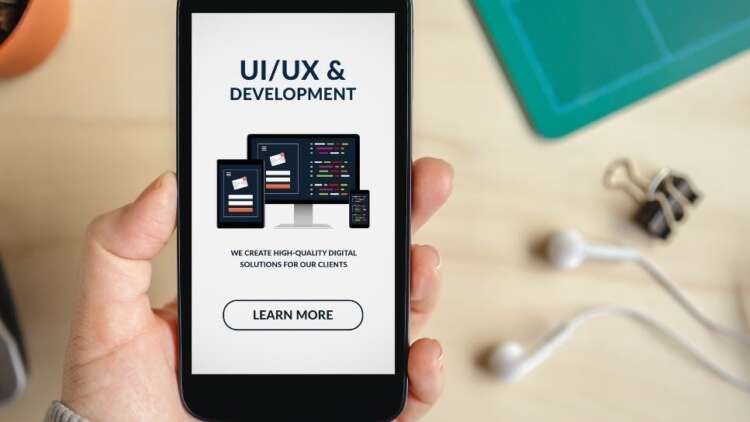
In today’s digital age, the web has become an integral part of our daily lives. It serves as a gateway to information, communication, and opportunities. However, it is crucial to acknowledge that many factors can hinder inclusivity and accessibility. In this comprehensive guide, we will explore various strategies and approaches aimed at making the web a better place for everyone. By prioritizing design, accessibility, and user-centric development, we can bridge the gap and ensure that individuals from all walks of life can fully participate and benefit from the web’s vast resources.
1) Design: Creating Intuitive and Engaging Interfaces
The Significance of Visual Hierarchy
Web design plays a crucial role in guiding users and prioritizing content. Visual hierarchy utilizes various elements such as size, color, and contrast to create intuitive interfaces that allow users to navigate effortlessly. By implementing proper headings, subheadings, and paragraph styles, designers enable users to skim through the content and find the information they need quickly.
Embracing Responsive Web Design
In an era where users access the web from various devices, it is essential to adopt responsive web design principles. This approach ensures that websites adapt seamlessly to different screen sizes, including mobile devices and tablets. By embracing responsive design, we enhance accessibility and provide an optimal user experience, regardless of the device being used.
The Power of White Space and Simplicity
While pursuing aesthetically pleasing web design, it is crucial not to overwhelm users with cluttered layouts and excessive information. The strategic use of white space adds elegance and improves readability and comprehension. Simplicity should be the guiding principle, focusing on the core message and removing any unnecessary distractions.
“Design is not just what it looks like and feels like. Design is how it works.” – Steve Jobs
2) Accessibility: Empowering Users of All Abilities
Alt Text: Enabling Image Accessibility
One of the fundamental aspects of web accessibility is providing alternative text, known as alt text, for images. Alt text serves as a description that is read by screen readers, enabling visually impaired users to understand the context and purpose of an image. By including descriptive alt text, we ensure that the content remains accessible to everyone.
Keyboard Accessibility: Seamless Navigation for All
Many users rely on keyboard navigation due to motor disabilities or other impairments. Therefore, it is crucial to design websites that can be navigated using keyboard inputs alone. Implementing keyboard accessibility features, such as logical tab order and focus indicators, allows individuals with mobility challenges to access and interact with web content easily.
Captioning and Transcripts: Making Multimedia Inclusive
Multimedia elements, such as videos and podcasts, have become prevalent across the web. To ensure equal access, it is important to provide captions and transcripts for these media formats. Captions enable individuals with hearing impairments to comprehend the audio content, while transcripts provide an alternative reading option for those who prefer or require it.
3) Designing for Diversity: Embrace Differences
To create a truly inclusive and intuitive web experience, it is important to embrace the cultural, linguistic, and cognitive differences of users. By recognizing and accommodating these diversities, we can enhance user experiences and ensure that everyone feels welcome and valued. This can be achieved through thoughtful design choices that consider different languages, cultural contexts, and cognitive abilities. By embracing diversity, we can create a web environment that is accessible and enjoyable for all users.
4) Performance Matters: Keep the Web Fast and Accessible!
The speed and accessibility of a website are crucial factors in delivering a positive user experience. Optimizing web performance ensures that information is readily available to everyone and enhances user satisfaction. Fast-loading pages and efficient navigation contribute to a seamless browsing experience, keeping users engaged and satisfied. By prioritizing performance, we can create a web environment that is accessible to all users, regardless of their internet connection or device capabilities.
5) Privacy: Safeguarding User Trust
In today’s digital landscape, privacy and data protection are paramount in building trust between users and websites. Users expect their personal information to be safeguarded and handled responsibly. By implementing robust privacy measures, websites can foster trust and create a secure online environment. Respecting user privacy includes obtaining informed consent, transparent data practices, and ensuring that user data is securely stored and protected. By prioritizing privacy, websites can establish a trustworthy relationship with their users, promoting confidence and loyalty.
6) Collaboration for Progress: The Power of Open Source
Open-source software plays a significant role in driving innovation and collaboration in the web development community. By adopting an open-source approach, developers can leverage the collective expertise and creativity of a diverse community. This community-driven development fosters inclusivity and adaptability in the web ecosystem. Open-source projects encourage collaboration, knowledge sharing, and continuous improvement. The power of open source lies in its ability to empower developers to create innovative solutions and address the evolving needs of users. By embracing open source, we can build a more inclusive and dynamic web environment that benefits everyone.
Why Choose Our Team for Web Development?
At Boxinall, we are passionate about creating an inclusive and user-friendly web experience. Our team consists of highly skilled designers and developers who prioritize design, accessibility, and user-centric development. Here’s why our team is the ideal choice for your web development needs:
- Extensive Experience: We have a wealth of experience in designing visually appealing and accessible websites. Our designers are well-versed in creating intuitive interfaces, employing visual hierarchy, and optimizing user experience. We understand the importance of accessibility guidelines and ensure that our designs adhere to the highest standards.
- User-Centric Approach: Our development process revolves around putting the user at the center. We conduct thorough user research and gather insights to design and develop websites that cater to their needs. By understanding user behavior and preferences, we can create personalized experiences that engage and delight visitors.
Frequently Asked Questions
How long does it take to develop a website?
The time required to develop a website depends on various factors, such as the complexity of the project, the number of features and pages, and the availability of content and resources. Typically, a basic website can take several weeks, while larger and more intricate projects may take several months. We work closely with our clients to establish realistic timelines and milestones to ensure timely delivery.
Can you redesign an existing website?
Absolutely! We offer website redesign services to revamp and enhance your existing online presence. Whether you need a complete overhaul or minor adjustments, our team can analyze your current website, identify areas for improvement, and implement a fresh and modern design that aligns with your brand identity.
How to ensure website maintenance?
Ongoing maintenance and support services are crucial to ensure your website runs smoothly and remains up-to-date. We provide regular backups, security updates, and technical assistance to address any issues that may arise. Our aim is to provide a hassle-free experience for our clients, allowing them to focus on their core business while we take care of their website.
How to optimize a website for search engines?
Search engine optimization (SEO) is prioritized in the web development process by optimizing your website’s structure, content, and meta tags. By implementing SEO best practices, we aim to increase organic traffic, enhance your online presence, and drive meaningful results for your business.
How to optimize e-commerce website development?
Whether you’re looking to start an online store or optimize your existing e-commerce platform, our team has the expertise to create a seamless and secure shopping experience for your customers. We integrate secure payment gateways, robust inventory management systems, and user-friendly interfaces to maximize conversions and drive sales.
In conclusion, creating an inclusive and user-friendly web experience requires prioritizing design, accessibility, and user-centric development. By adopting responsive web design principles, ensuring keyboard accessibility, providing alternative text for images, and embracing diversity, we can bridge the gap and make the web a better place for everyone. Additionally, optimizing website performance, safeguarding user privacy, and embracing open-source collaboration contribute to a more inclusive and dynamic web environment. At [Company Name], our team is dedicated to creating accessible and engaging websites that cater to the diverse needs of users. Choose us for your web development needs and experience the difference we can make.



